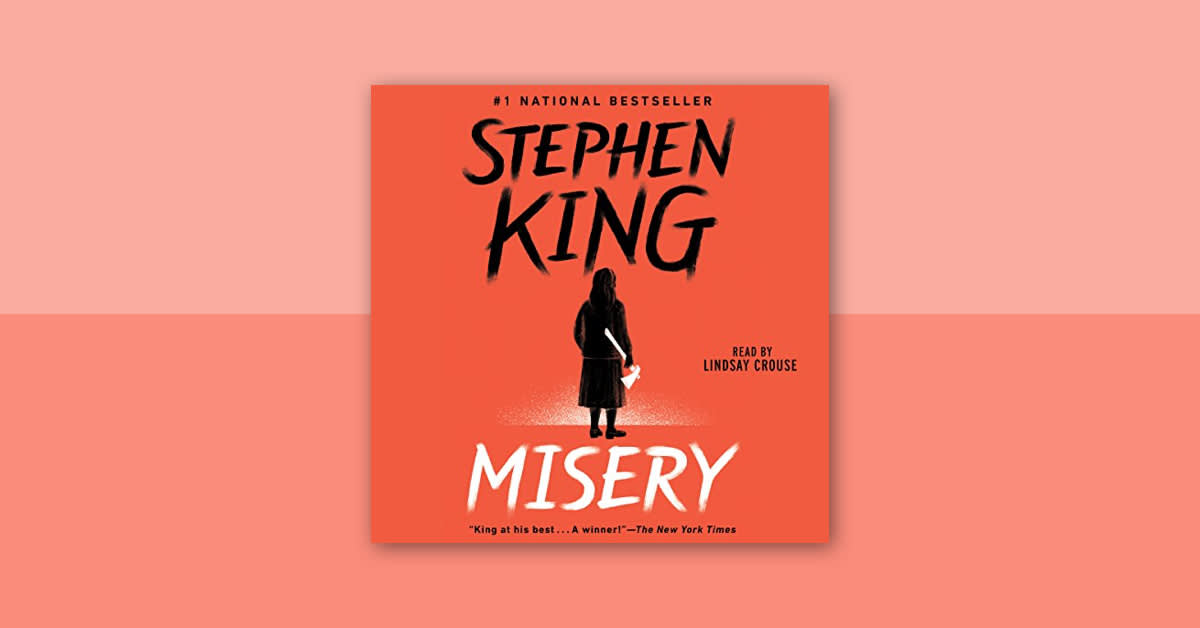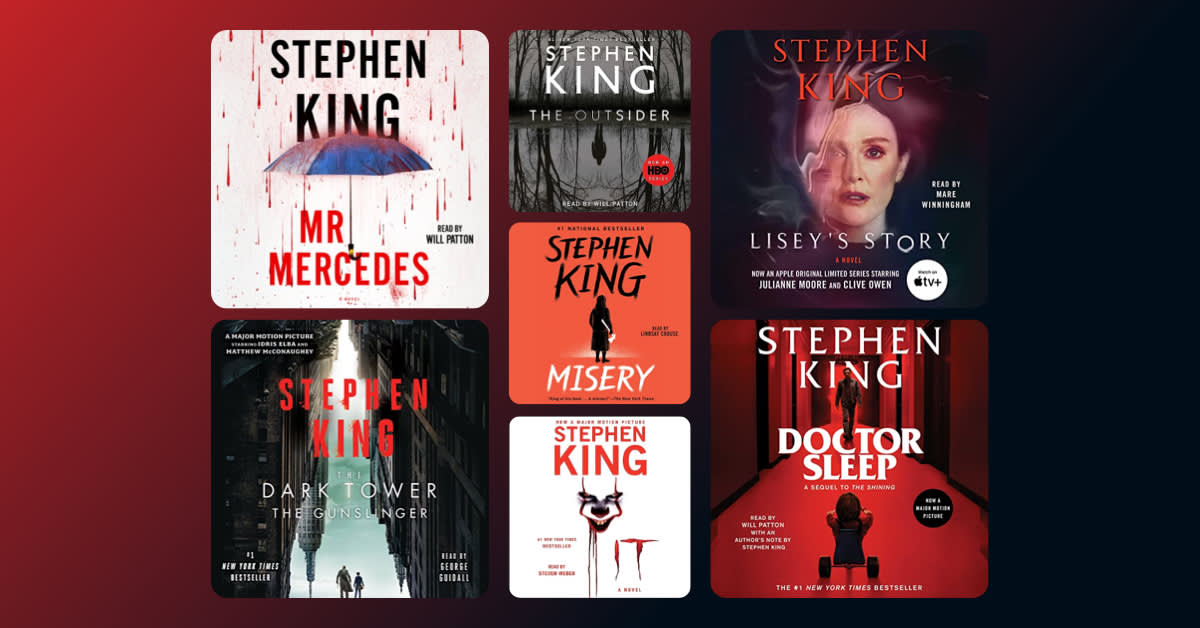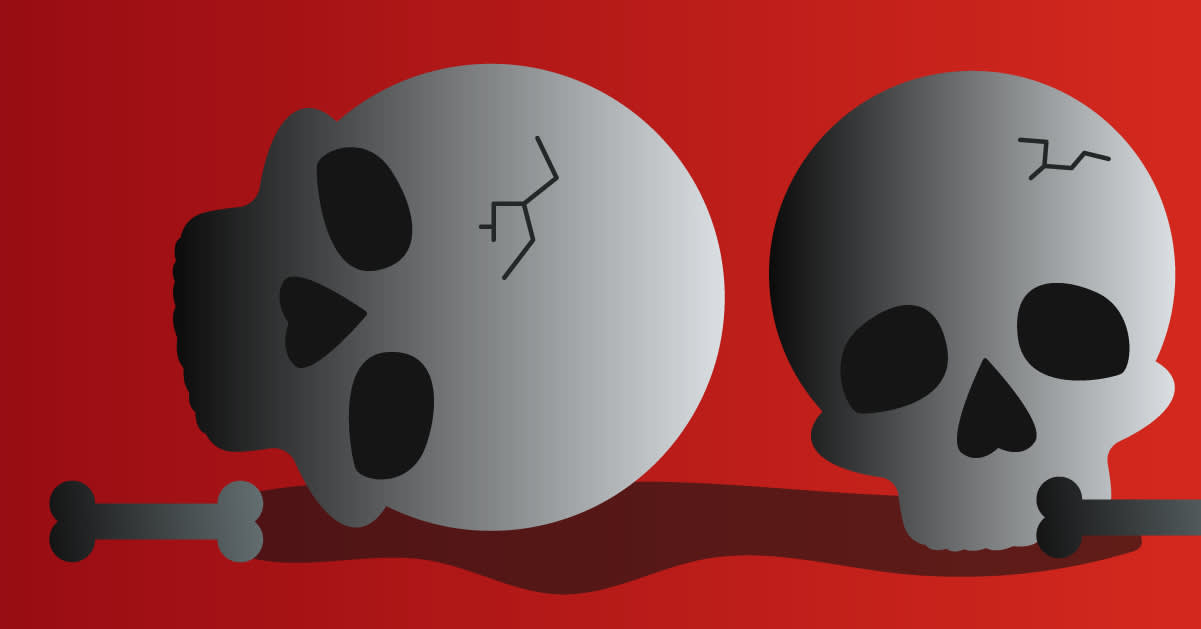In the pantheon of adaptations of the works of Stephen King, of which there are literally dozens, there is one that stands out at the top: Misery, the 1990 film directed by Rob Reiner, starring James Caan and Kathy Bates. The movie still holds the distinct honor of being the only adaptation of a Stephen King book to win an Oscar. That accolade went to Kathy Bates, who won an Academy Award for Best Actress in a Leading Role for her show-stopping portrayal of Annie Wilkes. Bates also won a Golden Globe Award for Best Actress in a Motion Picture: Drama for her shattering performance.
As far as Stephen King books go, Misery has always been considered one of his best novels by his millions of fans. First published by Viking Press on June 8, 1987, Misery won the first Bram Stoker Award for Novel and became a #1 New York Times best seller. It continues to win new horror fans, year after year.
What is Misery about? What happens in the novel?
The novel actually contains very few characters for a Stephen King story. The major Misery characters are Paul Sheldon and Annie Wilkes. Paul Sheldon is a best-selling author, famous for his Misery Chastain romance series, but who prefers to write more literary fiction. Paul's publisher agrees to publish the novels of his heart, which sell way fewer copies than his genre fiction, as long as he also continues to write his Misery Chastain series. But secretly, Paul has grown to hate Misery Chastain. And his fans are in for a shock: He has killed Misery off at the end of the soon-to-be released final novel in the series.
At the beginning of Misery, Paul has also just finished writing a new novel about thieves, which he believes is his best work yet. He is in Colorado, where he always travels to write his books. There are a lot of details here that differ between the book and the film, which we'll get to later. For now, let's just say that after wrapping up his book, Paul hits the road, where he encounters a tremendous snowstorm and crashes his car.
When Paul regains consciousness, he finds himself in a quaint room, lying in bed and in unbelievable pain. There's a stranger there with him, a woman, who he comes to learn is Annie Wilkes. Annie, a nurse, rescued Paul after his crash and brought him back to her house to tend to his health. Paul also discovers that there is nothing Annie loves more than the Misery Chastain books. As she tells him: "I'm your number one fan." Annie lives alone on a farm, miles from her nearest neighbors, with a few farm animals, including her pig, Misery, to keep her company. And from the bits and pieces Annie half-reveals about herself, we learn that she was on trial in Denver for something, but not convicted. Later, we learn she was accused of murdering a great number of patients under her care.
Annie flies off the handle easily, and, as Paul soon learns, she is mentally unbalanced. Before long, it becomes apparent that she has no intention of taking Paul to a hospital or ever letting him go. Annie is angry when she reads his new manuscript, calling it filth. She makes him burn it in the grill if he ever wants to get more pain medication, which she has been plying him with around the clock. Not long after, Annie is very excited when she returns home from town with the latest Misery Chastain novel. She quickly reads it and completely flips out at Paul when she comes to the ending, where Misery dies.
Annie decides that Paul must bring Misery back to life. She buys him a typewriter—famously missing the letter 'N'—and insists he write a new novel, one in which Misery is miraculously rescued from the grave, where she was mistakenly buried alive. Paul agrees to write the novel, but as he knows—and we know—Annie really isn't planning to let Paul go when he finishes the novel. She is of two minds: the one that is taken with Paul Sheldon and living out her dream that the two of them are together forever, and the one where she knows that's just a fantasy.
Paul, of course, does not want to stay in the house with this sadistic woman, even if she saved his life. It doesn't help that she hobbles him after she discovers he has been trying to escape. As the weeks go by and the snow thaws, Paul's car is found and the search for him ramps up. When a local sheriff visits Annie's house to ask her about Paul, Annie ends up murdering the sheriff. In the end, a recovering Paul and Annie struggle in a fight to the death, in which Paul wins. But Annie and his ordeal at her home continue to haunt him.
What inspired Misery?
According to George Beahm, author of The Stephen King Companion, King allegedly came up with the idea for Misery from the reception he got from fans following the publication of his high fantasy novel, The Eyes of the Dragon. His fans wanted another horror novel and were unhappy about the fantasy offering—and they let him know it. He also viewed Annie Wilkes as representative of his addiction to drugs, which he struggled with in the 1970s and 1980s. During a flight, he started jotting down notes for the novel that would eventually become Misery on a cocktail napkin.
How did Misery make it to the big screen?
The film adaptation of Misery was released on November 30, 1990. It was shot in Genoa, Nevada, which stood in for Silver Creek in the film. The screenplay was written by William Goldman (who also wrote a little something called The Princess Bride). The director, Rob Reiner had experience with adapting Stephen King's fiction for the screen, having turned his short story “The Body” into the 1986 movie, Stand by Me. And as already mentioned, Kathy Bates won an Oscar for her performance as Annie Wilkes, which is still the only Oscar awarded to a Stephen King adaptation. Stephen King has said he liked Kathy Bates in the movie so much, he wrote Dolores Claiborne with her in mind for the part.
How does the movie differ from the book?
The movie stays pretty true to the plot of the book, changing little details here and there for clarity and time, and a couple of big details for various reasons. One major and surprising change: The movie is actually less violent than the book. Sure, your ankles still ache when you think about THAT scene, but trust us—it’s way, way worse in the book. Here are several differences, big and small, between Misery, the book, and Misery, the movie.
• Book: Set in Sidewinder, Colorado.
• Film: Set in Silver Creek, Colorado.
• Book: Paul Sheldon celebrates finishing his new novel, Fast Cars, by drinking heavily and then deciding to take a road trip out West during a snowstorm in his 1974 Camaro.
• Film: Paul Sheldon celebrates finishing his untitled new novel by drinking one glass of champagne and smoking one cigarette, and then heads out for home, unaware of the approaching storm. According to the hotel desk clerk, he has a 1965 Ford Mustang, which is actually played by a 1966 model in the film.
• Book: While driving home from the store, Annie Wilkes stumbles upon an accident and discovers her favorite author in the wreckage.
• Film: Annie Wilkes is sorta stalking Paul Sheldon, sitting outside his hotel, when she sees him leave, follows him, and witnesses his car go off the road.
• Book: Paul wakes up from his accident and wonders why he isn't in a hospital, but he doesn't ask about this or using the phone.
• Film: When Paul wakes up, Annie strings Paul along for quite some time, telling him the roads to the hospital were closed because of the storm, and the phone lines are down, but she's going to call for help as soon as she's able.
• Book: Paul becomes severely addicted to Norvil, the painkiller Annie Wilkes gives him for his injuries. He almost dies a couple times because of her possible negligence with the dosage, causing her to perform mouth-to-mouth inside the house. He also experiences withdrawal symptoms when she withholds the medication and spends a lot of time screaming.
• Film: Annie performs mouth-to-mouth on Paul when she pulls him from the wreckage. And while he does look forward to his medication, the extent of his dependency on the drug is not portrayed.
• Book: It is not far into the book before Paul realizes that Annie Wilkes is mentally unstable. He attempts to be stern with her, argues with her quite often, and talks harshly to her to keep the upper hand.
• Film: While Paul thinks Annie is a bit odd, it takes longer before he realizes just how dangerous she is. He mostly tries to placate her whenever possible to keep her temper from flaring.
• Book: Annie's temper and sadism is much more prominent. For instance, she forces Paul to drink dirty, soapy water to wash down his medication. She screams and throws a lot more things, and she often hurts him physically.
• Film: Annie lashes out at Paul a couple of times, like when she reads his new book and when he asks for different typing paper.
• Book: There is a tiny Misery cast. Paul Sheldon and Annie Wilkes are almost the only characters on every page.
• Film: The sheriff has a much larger role, in which we see his search for Paul Sheldon between scenes with Annie and Paul. We also see a lot of the sheriff's wife/deputy, and Paul's editor, who is concerned for his safety.
• Book: Annie cuts off Paul's foot with an axe and cauterizes the stump with a blowtorch, after she discovers he has been getting out of his room while she's gone. She also cuts off his thumb later in the novel.
• Film: Annie breaks Paul's ankles with a sledgehammer. (Supposedly, Rob Reiner thought this would make her more sympathetic than having her cut off Paul's foot.) His thumbs remain intact.
• Book: Listeners are privy to Paul Sheldon's inner thoughts: all the drugged hallucinations, incoherent thoughts, and mental anguish that Paul experiences at Annie's house.
• Book: When a state trooper arrives at Annie's looking for Paul, she ends up stabbing him with a knife and then running him over in the yard with a lawnmower, in one of Stephen King's wildest death scenes.
• Film: After getting a sneaking suspicion, the sheriff pays a visit to Annie's house to ask her about Paul. He eventually discovers him in the basement, but is shot and killed at the top of the stairs before he can rescue him.
• Book: Paul gets the upper hand with Annie by setting fire to the finished Misery Chastain book he has been working on. Later, we discover he hid the real one under the bed and only burned a stack of paper,
• Film: Paul sets fire to the only copy of the new finished Misery Chastain manuscript, and in both the book and film, shoves the charred ashes down Annie's throat.
• Book: While fighting on the floor with Annie, Paul throws the typewriter at her head and locks her in a room. When help arrives, they discover that she had climbed out the window and made it all the way to the barn and grabbed a chainsaw, before succumbing to her head injury.
• Film: While fighting on the floor with Paul, Annie slips and hits her head on the typewriter. As Paul attempts to crawl away, she gets back up and jumps on his back, and he strikes her in the head with a metal sculpture of a pig.
Bottom line: The film manages to be just as horrifying, despite portraying less suffering and gore than the book, buoyed by the fantastic performances.
What happens to Annie Wilkes in Castle Rock?
In the second season of streaming horror series Castle Rock, which is inspired by and set within the Stephen King multiverse, Lizzy Caplan plays a younger version of Annie Wilkes that rewrites her story. In the show, Annie is taking medication for her bipolar disorder, but she still manages to kill people now and then. She also has a teenage daughter named Joy, and the two travel from town to town, never settling for very long in one place. Through bloody flashbacks, we learn her daughter might not actually belong to her. The show also attempts to portray Annie's mental illness in a more sympathetic light. She tries to control it with medications and comes across more as a character who has suffered a lot of trauma.
If you love Stephen King adaptations, listen in to just a few of the many Stephen King books that have been turned into films:




